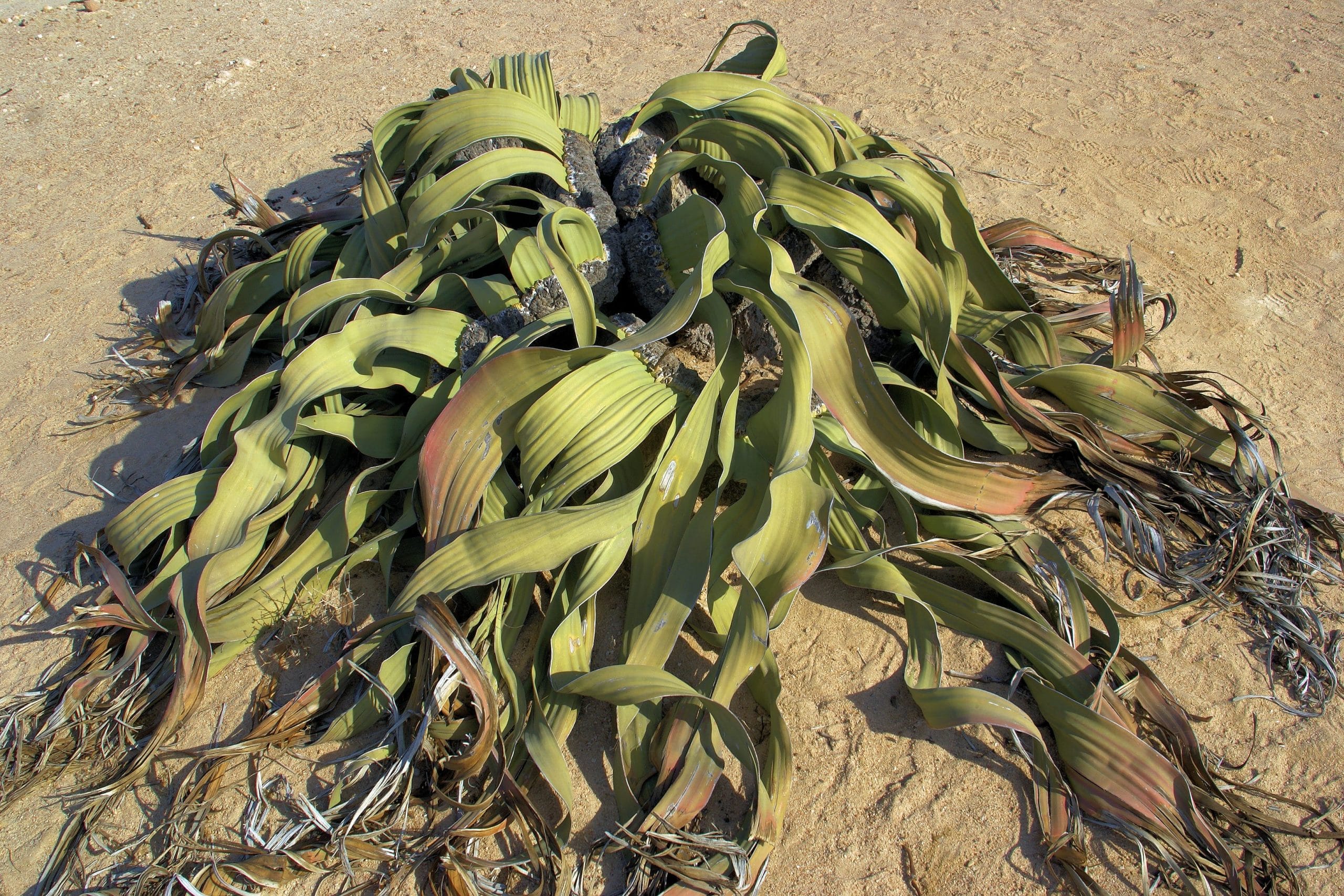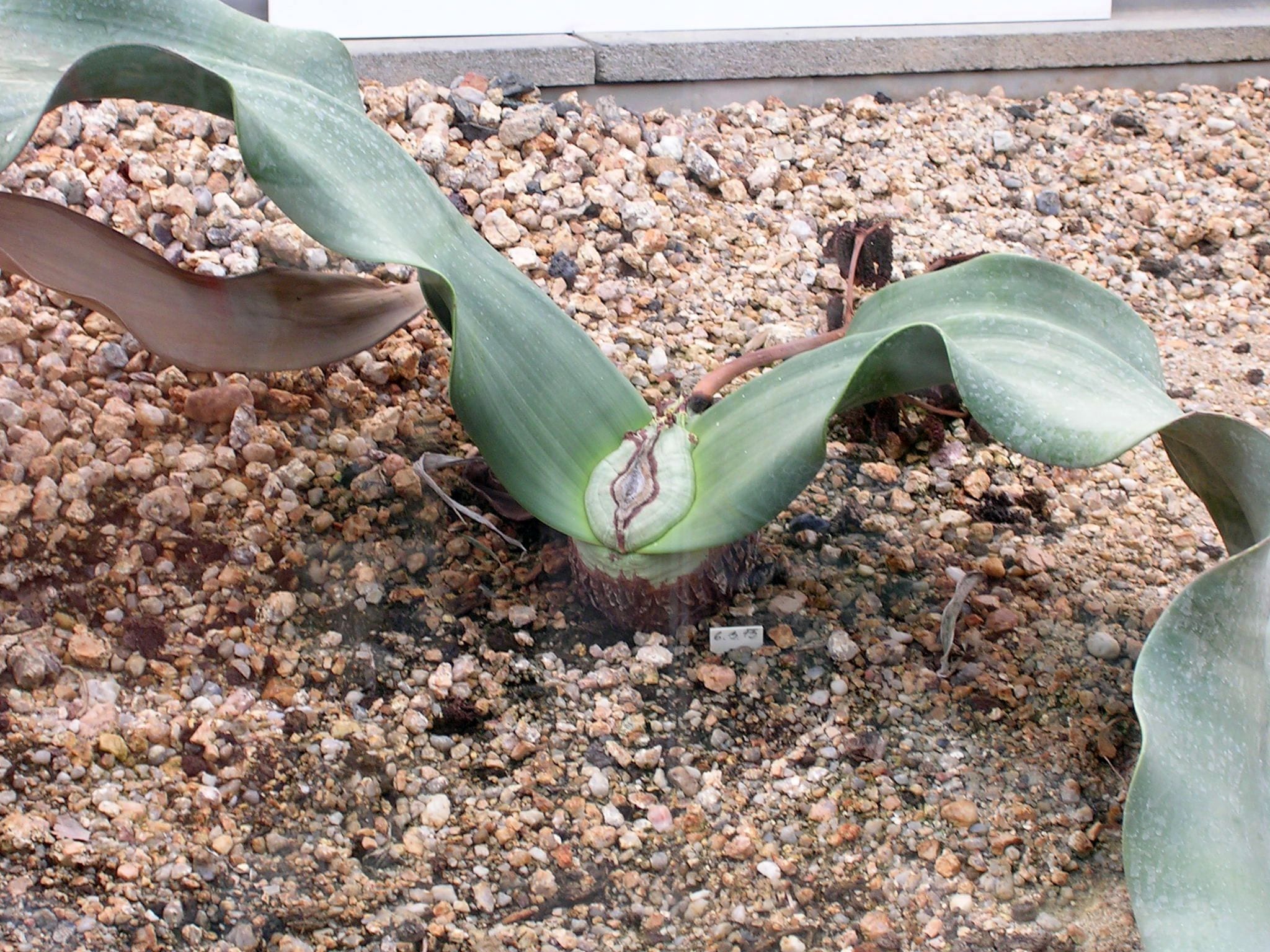
La Welwitschia mirabilis is a plant that is a challenge for all succulent-addicts. It is not that it is especially decorative, but it is so difficult to care that achieving success with it is a source of pride.
And is that being originally from one of the driest and hottest areas in the world, deciding to try to adapt it to a somewhat milder climate often ends badly. In spite of this, this is a blog about succulents, and there must be files on all the species: that of the Welwitschia mirabilis You can not miss.
How is it?

La Welwitschia mirabilis It is a monotypic species (the only one in the genus Welwitschia) that was described by Joseph Dalton Hooker and published in The Gardeners' Chronicle & Agricultural Gazette in 1862. It is an endemic plant of the Namib desert that grows from a thick trunk from which only two leaves sprout. As soon as they germinate, the cotyledons sprout, which are transformed into these two leaves.
The flowers arise from a terminal stem in the center of the plant, and are orange in color. The seeds are plants, with laminar wings, and they measure about 2cm.
What are their cares?

To have a Welwitschia mirabilis in conditions it must be planted in a large, deep pot with substrate that drains very, very well. In fact, it is highly recommended to simply use pumice alone or mixed with washed river sand. In addition, you have to water little: once every 10-15 days in summer and monthly the rest of the year.
However, it will be useless to have it in the best substrate if the weather is not good. The maximum temperature can be 40ºC without problem, but the minimum must not drop below 0ºC. In the event that it does, we will have to protect it in a heated greenhouse.